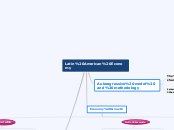Latin American Economy
Autoregressive model and methodology
The nominal effective exchange rate
Consumer price index (CPI) inflation
Estimate the effect of terms of trade shock
monetary policy procyclicality
Inflation expectation expectation gaps
Economy Growth
Favorable
Internal Environment
Internal Investment
Financial Sectors Estabes
Bank Capitalization
High performance rates
External Environment
* World demand solidity and international trade (Exports).
* Acomodative financial conditions (High Stock Prices)
* Partial rebound of raw material prices (Hydrocarbons and metals)
Not Favorable
US Inflationary Pressures
Financial, commercial and migratory connections
Hardening Monetary Policies
Consequences on interest rates in Latin America
Long term
Brazil, Colombia
Short term
México, Perú
External shocks
Inflationary effect
It forced the central banks of Latin America to change their monetary policies
Monetary policy procyclicality
CREDIBILITY, TRANSPARENCY AND COMMUNICATION
Price stability
Efficacy of monetary policies
Looser monetary policy 2017-2018
Economic Recovery
Priorities in Political Matters
Fiscal Consolidation
Sustainability
Reduction of fiscal deficit
-Develop Human Capital
-Back Infrastructure bottlenecks
-Improve the management of government and business climate
-Execute financial release
outlook for latin american and the caribbean
Twin deficit and subdued long-run projections
led by improvements in the private
Domestic investment boosting growth
The end of recession
subsequent recovery in some of the major economies
Are benefits from supportive external condition
Significant tailwinds to the regions's financial
Is providing support to the region's exports
